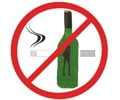
Findings will be published in the December 2011 issue of Alcoholism: Clinical & Experimental Research and are currently available at Early View.
"The literature on alcohol consumption indicates that younger birth cohorts, especially women, are increasingly at risk for the development of AUDs," said Katherine M. Keyes, a post-doctoral fellow in epidemiology at Columbia University and corresponding author for the study. "Given that alcoholism among women is increasing, there is a need for specific public health prevention and intervention efforts. Further, results suggest the environment increases risk for alcoholism. While AUDs have a substantial genetic contribution, birth-cohort effects indicate that factors in the environment such as policies, laws, social norms, availability, and broader social context also contribute substantially to underlying risk for AUDs in the population."
Richard A. Grucza, an epidemiologist at Washington University School of Medicine, agrees. "Social and cultural factors are among the most powerful determinants of alcohol use and other health behaviors," he said. "For example, one approach to intervention for high-risk drinkers, particularly in younger age groups, is to make them realize that they consume quite a bit more alcohol then their peers. The realization that one's behavior falls outside of a generally accepted 'social norm' often results in behavioral change. Other aspects unique to a particular society at a given time, such as alcohol prices and availability, can be influenced by raising alcohol excise taxes or restricting liquor store hours and thus shape alcohol use."
Although the literature analysis found that younger birth cohorts in North America, especially those born after World War II, are more likely than other cohorts to engage in heavy episodic drinking and develop AUDs, this cohort effect was not found in Australia and Western Europe. "The U.S. differs from Western Europe and Australia in that we have a fairly large number of people who don't drink at all," explained Grucza. "Europe and Australia, on the other hand, have historically had few 'teetotalers.' Over time, we see the number of non-drinkers in the U.S. decreasing, whereas alcohol use has always been more pervasive in some other Western cultures.
"The results on gender highlight the need for increasing research on the social etiology of AUDs," said Keyes. "Traditionally, gender differences are explained by biological differences in the ability of the body to metabolize alcohol and other biological mechanisms. These results suggest that the magnitude of gender differences in AUDs changes over time, highlighting an important role for societal factors in the production of AUDs in the population."
Advertisement
Grucza added that social and cultural changes specific to women in western cultures during the past 50 to 60 years are too numerous to count. "By and large, these changes mean women have many opportunities that were once specific to men: workforce participation, higher education, economic independence, etc.," he said. "These changes have also brought women into drinking cultures that may exist on campus, in the workplace, and elsewhere. Undoubtedly, we have more to learn about the roles of economic independence and employment on alcohol use and alcohol problems."
Advertisement











